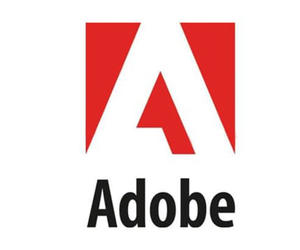Understanding Higher Ed’s Digital Literacy Problem
Depending on who you ask, efforts to prepare students for the digital job market are working to some degree. As noted in a Gallup poll, 96 percent of chief academic officers at higher education institutions say their schools are “very or somewhat” effective at preparing students for the workplace.
However, business leaders don’t quite see it that way: Just 11 percent of those surveyed said they believe graduates have the skills and competencies required to succeed at their companies.
Put simply, there’s a disconnect here between theory and practice. Universities and colleges see current learning frameworks as sufficient, while businesses are sounding the alarm on the growing skills gap.
When it comes to implementing strong digital literacy programs, some universities are taking a more proactive approach than others. The University of North Carolina at Chapel Hill, for example, is empowering learners by partnering with Adobe to deliver Creative Cloud for enterprise licenses to students and faculty.
WATCH: See how Adobe is working with CDW to foster excellence at HBCUs.
How Creative Cloud Promotes Digital Literacy
With over 29,000 students and growing, UNC needed a solution capable of empowering digital education anywhere, anytime for both students and staff. According to the university, Abode’s Creative Cloud for enterprise was a good fit for several reasons.
The partnership with Adobe offered the following key advantages:
- Empowering digital communications. As highlighted by the ALA, digital literacy isn’t only about gaining technology skills. It’s about applying these skills in context to improve human communications and connections. “Communication is a big part of any field of study,” Todd Taylor, professor of English and director of the First Year Writing Program at UNC, said in a statement. “Adobe Creative Cloud delivers powerful tools that support critical thinking, reading, writing and listening.”
- Improving student capabilities. Giving all students access to every Creative Cloud application encourages them to experiment, learn new skills and find their own solutions to problems. This, in turn, teaches them how to broadly apply digital knowledge in different circumstances.
- Enhancing learning experiences. Adobe Creative Cloud helps students think outside the box by enhancing their learning experiences. This was the case for health humanities student Izzy Pinheiro, who originally planned to make a documentary on the humanitarian healthcare crisis in Jordan. After learning about Adobe Spark, she found that a multimedia website would be a more effective way to tell the story. “Adobe Spark made it easy to organically pull together a bunch of different pieces through a website,” Pinheiro said in a statement. “I can throw in photos, video clips, text and animation very quickly. Working with Adobe Creative Cloud has really opened my eyes to how media can tell a story that will get people involved and support advocacy work worldwide.”
- Reducing administrative overhead. Creative Cloud for enterprise also offers benefits for IT administrators. With the Adobe Admin Console, teams can distribute tasks such as user management, package deployment and support ticket generation across departments to improve efficiency and reduce total overhead.
The results? UNC is now delivering on the promise of digital literacy by empowering students to use creative tools, teaching lucrative digital skills and encouraging experimentation with Creative Cloud apps.
Chris Kielt, vice chancellor for IT and CIO at UNC at Chapel Hill, puts it simply: “The digital literacy initiative at UNC-Chapel Hill has been a true partnership with Adobe. We’re producing graduates who will have the digital literacy skills that are expected by the marketplace. That will result in a highly satisfying outcome for our future and for the future of our students.”
Brought to you by:











